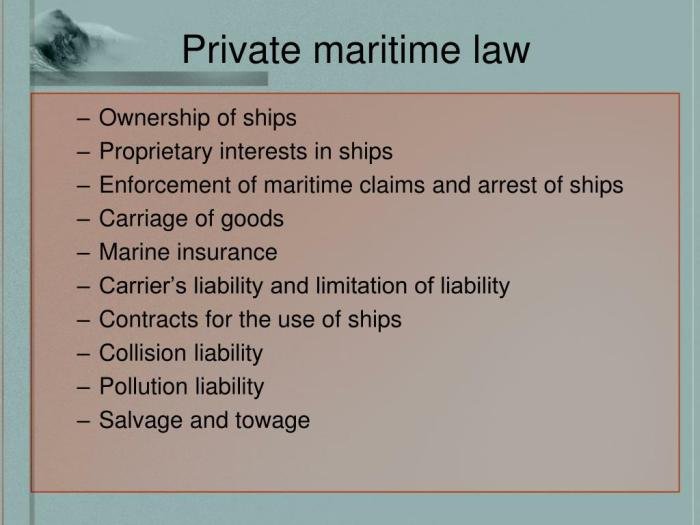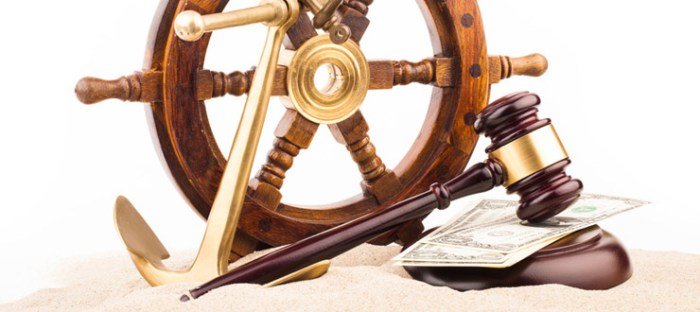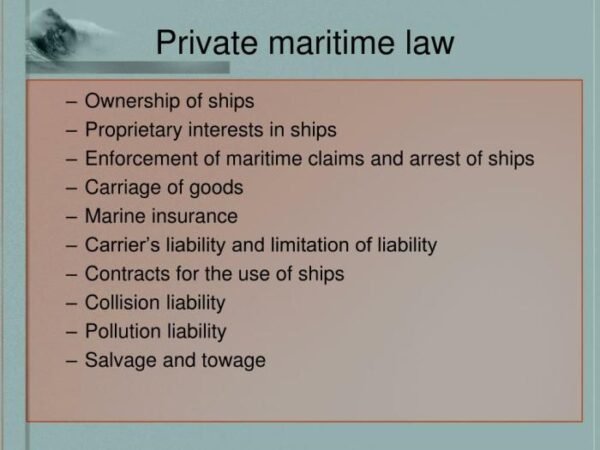
Navigating the complex world of maritime law can be challenging, but Maritime Law Model Course 6.08 offers a structured and insightful journey into this fascinating field. This course delves into the key legal principles governing maritime activities, providing students with a solid foundation in this specialized area of law. From understanding maritime jurisdiction to resolving international disputes, the course covers a wide range of topics crucial for anyone interested in pursuing a career in maritime law or related fields.
The course employs a multifaceted approach, combining theoretical knowledge with practical applications. Through real-world case studies, hypothetical scenarios, and detailed analyses of international conventions, students gain a comprehensive understanding of the legal frameworks governing shipping, fishing, and other maritime operations. The pedagogical approach emphasizes critical thinking and problem-solving skills, equipping students with the tools they need to navigate the complexities of maritime legal issues effectively.
Course Overview

Maritime Law Model Course 6.08 provides a comprehensive introduction to the key principles and practices governing maritime law. This course is designed to equip students with a strong foundational understanding of this complex and specialized area of law, preparing them for further study or professional practice in the maritime industry.
Learning Objectives
This course aims to achieve several key learning objectives. Students will gain a thorough understanding of fundamental maritime legal concepts, including jurisdiction, admiralty law, and international maritime conventions. They will also develop skills in analyzing maritime legal issues, applying relevant laws to hypothetical and real-world scenarios, and interpreting maritime contracts. Finally, the course will foster critical thinking and problem-solving abilities within the context of maritime law.
Course Structure and Pedagogical Approach
The course utilizes a blended learning approach, combining lectures, case studies, and interactive exercises. Lectures provide a systematic overview of the core topics, while case studies allow students to apply their knowledge to practical scenarios. Interactive exercises, including simulations and group discussions, encourage active learning and collaborative problem-solving. The course materials are designed to be engaging and accessible, utilizing a variety of formats including videos, presentations, and interactive quizzes.
Topics Covered
The course covers a wide range of topics essential to understanding maritime law. These include: maritime jurisdiction and the application of admiralty law; the carriage of goods by sea (COGSA); maritime contracts, including charter parties and bills of lading; collision and salvage law; marine insurance; liability for pollution; and international conventions impacting maritime law, such as the UN Convention on the Law of the Sea (UNCLOS).
Comparison with Similar Courses
The following table compares Maritime Law Model Course 6.08 with similar courses offered by other institutions. Note that specific course content and credit hours may vary depending on the institution and year.
| Course Name | Institution | Credit Hours | Focus |
|---|---|---|---|
| Maritime Law Model Course 6.08 | [Institution Name] | [Credit Hours] | Broad overview of maritime law principles and practices |
| Maritime Law I | [Institution Name] | [Credit Hours] | Focus on admiralty law and jurisdiction |
| International Maritime Law | [Institution Name] | [Credit Hours] | Emphasis on international conventions and treaties |
| Shipping Law | [Institution Name] | [Credit Hours] | Concentrates on commercial aspects of shipping and contracts |
Key Legal Concepts in Maritime Law 6.08
This section delves into the fundamental legal principles governing maritime activities, providing a framework for understanding the complexities of this specialized area of law. We will examine key concepts crucial to navigating the legal landscape of the maritime world, from jurisdiction and contracts to liens and dispute resolution.
Maritime Jurisdiction and its Limitations
Maritime jurisdiction refers to the authority of a state to exercise its legal power over maritime matters. This authority extends to ships, vessels, and activities occurring on navigable waters, including oceans, seas, and rivers. However, this jurisdiction is not unlimited. It is typically defined by a nation’s territorial waters, extending outwards from its coastline, as well as its exclusive economic zone (EEZ), where it holds specific rights regarding resource exploitation. International treaties and conventions, such as the United Nations Convention on the Law of the Sea (UNCLOS), play a significant role in defining and limiting the jurisdictional reach of coastal states. Conflicts can arise when incidents occur in international waters or involve vessels registered in different countries, necessitating the application of international law and conventions to resolve disputes. For example, a collision between a US-flagged vessel and a Chinese-flagged vessel in international waters might involve legal proceedings in multiple jurisdictions, depending on the circumstances and applicable treaties.
Types of Maritime Contracts and their Implications
Maritime law encompasses a wide array of specialized contracts, each with unique implications and legal consequences. Common examples include charter parties (governing the hiring of vessels), bills of lading (documenting the carriage of goods), and marine insurance policies (protecting against maritime risks). Charter parties, for instance, can be voyage charters (for a single voyage) or time charters (for a specific period), each with different terms and conditions affecting the responsibilities of the ship owner and the charterer. Bills of lading, meanwhile, serve as both a receipt for goods and a contract of carriage, outlining the responsibilities of the carrier in transporting the goods safely and securely to their destination. A breach of contract in any of these areas can lead to significant legal and financial repercussions for the involved parties. A delay in delivery of goods due to a breach of a charter party, for example, could result in substantial financial losses for the charterer.
Maritime Liens and Mortgages
Maritime liens represent a special type of security interest in a vessel or its cargo. They arise automatically from certain maritime transactions, such as unpaid wages to crew members or damages caused by a vessel to another. Maritime liens have priority over other types of claims against the vessel, making them a powerful tool for creditors. Conversely, maritime mortgages are consensual security interests created by a vessel owner to secure a loan. They are typically registered with a relevant maritime authority to provide notice to third parties. The relative priority of maritime liens and mortgages is a complex area of law, with specific rules governing their ranking in the event of a vessel’s insolvency or sale. For example, a maritime lien for unpaid wages generally takes priority over a maritime mortgage.
Resolving Maritime Disputes Through Arbitration or Litigation
Disputes in maritime law are frequently resolved through arbitration or litigation. Arbitration, a private and confidential process, often involves a neutral arbitrator or panel of arbitrators selected by the parties to resolve the dispute. Litigation, on the other hand, takes place within the court system. The choice between arbitration and litigation depends on several factors, including the nature of the dispute, the parties’ preferences, and the applicable contract terms. Many maritime contracts contain arbitration clauses specifying that disputes will be resolved through arbitration, often in a specific location and under the rules of a particular arbitral institution. Litigation, while offering the potential for judicial review, can be a more time-consuming and costly process. The choice of forum (location for the dispute resolution) is also crucial, as it can significantly impact the applicable law and the availability of remedies.
Case Studies and Practical Applications
This section delves into real-world examples of maritime law in action, illustrating the key concepts explored throughout this course. We will examine several case studies, analyze a hypothetical collision scenario, detail the process of handling a cargo damage claim, and compare two significant maritime law cases to highlight both their commonalities and their differences. These practical applications will solidify your understanding of the theoretical principles discussed earlier.
Real-World Case Studies
The following case studies demonstrate the complexities and practical implications of maritime law. Understanding these cases is crucial for navigating the intricacies of this specialized legal field.
- The Exxon Valdez Oil Spill (1989): This catastrophic event involved the grounding of the Exxon Valdez tanker in Prince William Sound, Alaska, resulting in a massive oil spill. The legal issues included negligence on the part of the captain and Exxon, environmental damage claims, and the liability of the shipowner. The outcome involved substantial fines, cleanup costs, and long-term environmental remediation efforts. The case highlighted the significant environmental and economic consequences of maritime accidents and the complexities of establishing liability in such cases.
- The M/V Rena grounding (2011): The container ship M/V Rena ran aground on Astrolabe Reef off the coast of New Zealand, causing significant environmental damage and impacting the local ecosystem. Legal issues involved the shipowner’s liability for environmental damage, the adequacy of salvage operations, and the compensation of affected parties. The outcome involved extensive cleanup efforts, compensation payments to affected parties, and investigations into the causes of the grounding, emphasizing the importance of proper navigation and risk assessment.
- The Costa Concordia disaster (2012): The cruise ship Costa Concordia capsized near the Italian coast, resulting in significant loss of life and property damage. The legal issues centered around the captain’s negligence, the cruise line’s liability for passenger safety, and the adequacy of emergency procedures. The outcome involved criminal charges against the captain, compensation claims from victims and their families, and investigations into the safety protocols of the cruise line. This case underscores the importance of adherence to safety regulations and the potential for severe legal consequences in the event of negligence.
Hypothetical Collision at Sea
A hypothetical scenario involves two vessels, the “Oceanic Star” and the “Maritime Venture,” colliding in a busy shipping lane due to a failure by the “Oceanic Star” to maintain a proper lookout. Potential legal ramifications include claims for property damage, personal injury, and potential criminal charges against the captain or crew of the “Oceanic Star” for negligence. Liability will be determined by examining factors such as the rules of navigation (COLREGs), the degree of fault of each vessel, and any contributing factors such as poor weather conditions. The case would likely involve extensive investigation and litigation, potentially spanning several years and involving multiple jurisdictions.
Cargo Damage Claim Procedure
Handling a cargo damage claim involves a structured approach. First, a detailed inspection of the damaged cargo must be conducted, documenting the extent of the damage with photographs and detailed reports. Next, the claim must be formally submitted to the carrier or insurer, including all supporting documentation. The parties will then negotiate a settlement, potentially involving expert surveys and legal counsel. If a settlement cannot be reached, litigation may be necessary to resolve the dispute. The process can be lengthy and complex, often requiring specialized expertise in cargo handling and maritime insurance.
Comparative Analysis of Maritime Law Cases
A comparison of the *Exxon Valdez* and *Costa Concordia* cases reveals similarities in terms of the significant environmental and human costs of maritime accidents and the extensive legal ramifications involved. However, a key difference lies in the primary focus of the litigation: environmental damage in the *Exxon Valdez* case versus passenger safety and liability in the *Costa Concordia* case. Both cases highlight the importance of robust safety protocols, risk management, and the potential for severe consequences in the event of negligence, but they demonstrate the diverse facets of maritime law and its application to various scenarios.
International Maritime Conventions and Regulations

This section delves into the crucial role of international conventions and regulations in shaping the legal landscape of maritime activities. Understanding these frameworks is essential for navigating the complexities of international maritime law and ensuring compliance. The impact of these agreements on national laws and the differing regulatory approaches across various maritime sectors will be examined.
The International Maritime Organization (IMO) is a specialized agency of the United Nations responsible for improving maritime safety and security and preventing marine pollution by ships. Its influence extends to the creation and enforcement of international maritime law, making it a pivotal player in global maritime governance. The conventions and codes developed by the IMO significantly impact the legal responsibilities of states, shipowners, and other maritime stakeholders. The IMO’s work fosters a harmonized approach to maritime regulation, facilitating international trade and protecting the marine environment.
Key International Maritime Conventions
Several key international conventions are fundamental to maritime law. These conventions address various aspects of maritime activities, from safety and security to environmental protection and liability. Their influence is widespread, shaping national legislation and influencing legal proceedings globally.
- The International Convention for the Safety of Life at Sea (SOLAS): This convention sets minimum standards for the construction, equipment, and operation of ships to ensure maritime safety. It addresses various aspects, including hull integrity, fire protection, life-saving appliances, and radio communications.
- The International Convention on Standards of Training, Certification and Watchkeeping for Seafarers (STCW): This convention establishes minimum standards for the training, certification, and watchkeeping of seafarers, ensuring competent personnel operate vessels safely and efficiently. It covers a wide range of maritime professions and their specific training requirements.
- The International Convention for the Prevention of Pollution from Ships (MARPOL): This convention aims to minimize pollution of the marine environment by ships. It covers various pollutants, including oil, chemicals, garbage, and sewage, and sets standards for their prevention and management.
- The United Nations Convention on the Law of the Sea (UNCLOS): This comprehensive treaty governs all aspects of ocean use, including navigation, resource exploitation, and marine environmental protection. It provides a framework for resolving maritime disputes and establishing maritime zones.
The Role of the International Maritime Organization (IMO)
The IMO’s role extends beyond simply creating conventions. It provides a forum for member states to cooperate on maritime issues, develop technical standards, and facilitate the implementation of international regulations. The IMO also provides technical assistance to developing countries to help them improve their maritime safety and environmental protection capabilities. Furthermore, the IMO conducts research and analysis to inform its policy-making processes and adapt to emerging challenges in the maritime sector. Its influence is paramount in shaping global maritime policy and standards.
Impact of International Treaties on National Maritime Laws
International maritime treaties significantly influence national maritime laws. Many countries incorporate the provisions of IMO conventions into their domestic legislation, ensuring compliance with international standards. This harmonization of national laws facilitates international trade and simplifies the legal framework for maritime activities. However, the extent of the impact varies depending on national legal systems and priorities. Some nations might adopt a more stringent approach than the minimum standards set by the conventions, reflecting their commitment to safety and environmental protection. This integration is crucial for maintaining a consistent and predictable global maritime environment.
Legal Frameworks Governing Different Types of Maritime Transport
The legal frameworks governing different types of maritime transport, such as shipping and fishing, exhibit notable differences. Shipping is largely regulated by the IMO conventions focused on safety, security, and environmental protection. Fishing, on the other hand, is governed by a complex interplay of national laws, regional fisheries management organizations, and international agreements, often addressing issues like conservation, resource allocation, and combating illegal, unreported, and unregulated (IUU) fishing. These differences reflect the distinct nature of the activities and their environmental and economic impacts. For example, the regulations surrounding the transport of hazardous materials by sea are far more stringent than those for fishing vessels, reflecting the different levels of potential risk.
Emerging Trends in Maritime Law

The maritime industry, a cornerstone of global trade and commerce, is undergoing a period of rapid transformation driven by technological advancements, environmental concerns, and evolving geopolitical landscapes. These changes present both opportunities and significant challenges to the established principles and regulations governing maritime activities. This section will explore some of the most prominent emerging trends and their implications for maritime law.
Autonomous Vessels and Traditional Maritime Law
The development and deployment of autonomous vessels, or unmanned surface vessels (USVs), pose a significant challenge to traditional maritime law principles. Established legal frameworks, built around the concept of a human captain responsible for a vessel’s navigation and actions, are ill-equipped to address the complexities of AI-driven decision-making at sea. Questions surrounding liability in the event of accidents, the application of existing collision regulations, and the definition of “command” in an autonomous context require urgent attention and the development of new international standards and legal frameworks. Consider, for instance, a collision involving an autonomous cargo ship and a fishing vessel; determining fault and assigning liability becomes considerably more complex when human intervention is absent.
Maritime Cybersecurity
The increasing reliance on interconnected systems and digital technologies within the maritime industry has amplified vulnerabilities to cyberattacks. These attacks can range from disrupting navigation systems and causing collisions to compromising sensitive cargo data and potentially leading to theft or sabotage. The evolving legal landscape surrounding maritime cybersecurity addresses issues such as data protection, incident response protocols, and the responsibility of vessel operators to implement robust cybersecurity measures. International regulations and industry best practices are being developed to mitigate these risks, but the legal framework remains in a state of flux, requiring continuous adaptation to emerging threats. A significant incident, like a successful cyberattack leading to a major oil spill, would undoubtedly accelerate the development of stricter legal standards and liabilities.
Climate Change and Environmental Regulations
The impact of climate change on the maritime industry is multifaceted. Rising sea levels, more frequent extreme weather events, and changes in shipping routes necessitate adaptations to infrastructure and operational practices. Furthermore, increasing environmental regulations, such as those aimed at reducing greenhouse gas emissions from ships (like the IMO’s 2020 sulfur cap), are reshaping the industry’s operational model and leading to significant legal and economic implications for shipping companies. The transition to alternative fuels and the development of more environmentally friendly technologies will require significant investment and legal frameworks to support and regulate this transition. The potential for legal challenges relating to compliance with these regulations and the enforcement of penalties for non-compliance will also increase.
Globalization’s Impact on Maritime Law
| Factor | Impact on Maritime Law | Example |
|---|---|---|
| Increased International Trade | Greater need for harmonized international maritime regulations and dispute resolution mechanisms. | The adoption of the UN Convention on the Law of the Sea (UNCLOS) to govern maritime boundaries and resources. |
| Growth of Global Supply Chains | Increased complexity in determining liability for incidents involving multiple parties and jurisdictions. | A cargo container lost at sea during a transpacific voyage, requiring investigation and liability determination across multiple countries. |
| Technological Interdependence | Challenges in balancing national security interests with the free flow of maritime commerce. | Regulations governing the use of autonomous vessels and the potential for their misuse. |
This table visually represents the interconnectedness of globalization and maritime law. It depicts three key aspects of globalization—increased international trade, the expansion of global supply chains, and technological interdependence—and shows how each factor influences the evolution and application of maritime legal principles. The table’s structure visually reinforces the idea that these elements are not isolated but rather interact, creating a complex and dynamic legal environment. Each cell provides a specific example to illustrate the impact of globalization on maritime law, grounding the abstract concept in tangible realities.
Closure
Maritime Law Model Course 6.08 provides a robust and practical education in a dynamic and ever-evolving legal landscape. By exploring key legal concepts, analyzing real-world case studies, and examining emerging trends, the course equips students with the knowledge and skills necessary to succeed in this specialized field. The course’s blend of theoretical instruction and practical application fosters critical thinking and problem-solving abilities, preparing students to confidently tackle the challenges of maritime law in the modern world. The comprehensive coverage ensures graduates possess a deep understanding of both the foundational principles and the contemporary issues shaping the future of maritime legal practice.
User Queries
What types of careers are suitable after completing this course?
Graduates may pursue careers as maritime lawyers, legal professionals in shipping companies, maritime arbitrators, or government regulators.
Is prior legal knowledge required to enroll in the course?
While some familiarity with legal concepts is helpful, the course is designed to be accessible to students with diverse backgrounds. The course materials provide the necessary foundational knowledge.
Are there any specific software or tools required for the course?
No specialized software is required. Access to standard word processing and research tools will suffice.
What kind of assessment methods are used in this course?
Assessment methods may include exams, assignments, case study analyses, and potentially presentations, depending on the course structure.


